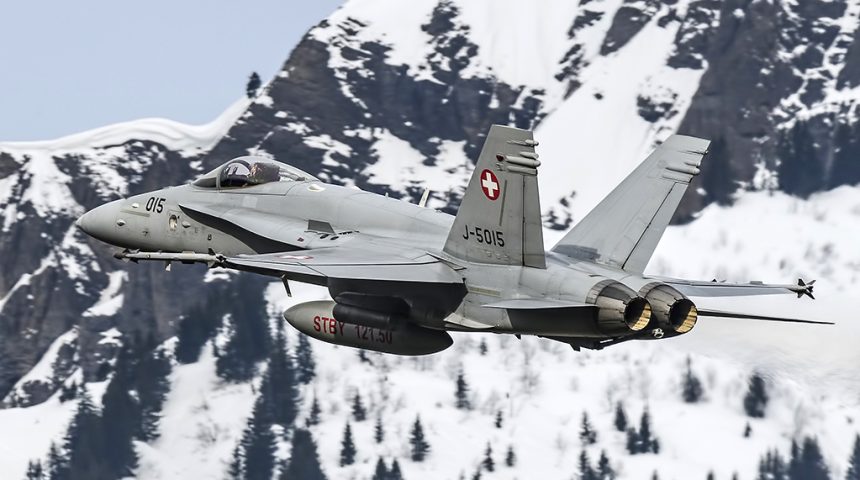With a really thin margin of just 9,000 votes, Swiss citizens have approved the multi-billion procurement of new fighter jets to replace both the F-5 and F/A-18 jets in service today.
The majority (50.2%) of Swiss voters gave the go ahead to the purchase of new combat aircraft on Sept. 27, 2020. The referendum called the citizens to say yes or no to a government-backed plan 6.49B USD funding packet to find a replacement for the F-5 Tiger and F/A-18C/D Hornet jets currently in service with the Swiss Air Force.
It was the third nationwide vote in almost 30 years about the purchase of new combat aircraft for the Swiss air force. The latest attempt was in 2014, when a referendum rejected the acquisition of the Saab Gripen (to replace the F-5E).
As a consequence, the Swiss Air Force launched “Air 2030” program aimed to the selection of its future fighter and, as part of the program, the air arms carried out the evaluation of four candidate aircraft: the Eurofighter Typhoon, the Boeing F/A-18 Super Hornet, the Dassault Rafale, and the Lockheed Martin F-35. A fifth candidate, Gripen E, was retired before its evaluation initially planned for the end of June 2019, after the Swiss procurement agency, “formally recommended” that Saab stayed home as flight tests had been designed to only evaluate aircraft that were operationally ready in 2019.
On Jan. 10, 2020, armasuisse issued the second RFQ for new fighter aircraft to the government authorities where the four potential suppliers are located: Germany (Airbus Eurofighter), France (Dassault Rafale) and the U.S. (Boeing F/A-18 Super Hornet and Lockheed Martin F-35A).
“The second request for proposal is based on the analysis of the first proposal and on findings from flight, simulator and ground tests as well as audits with armed forces operating the evaluated fighter aircraft. In the second request for proposal, the companies contacted via the government authorities are requested to submit the most advantageous offer for Switzerland.
The proposal should include the following elements:
- prices for 36 and 40 aircraft, including defined logistics and weapons, as a binding starting point for the detailed negotiations with the selected candidate after the type selection
- offers for cooperation between the armed forces and the procurement authorities of Switzerland and those of the supplier country
- envisaged or already initiated offset projects”
By November 2020, the Swiss Government is expected to receive this second offer and will proceed with the final evaluation of four fighter models bidding for the contract. The winner should be announced in the second quarter of 2021. The delivery of the new aircraft is slated to start in 2025 and end in 2030, if everything goes as planned.
“In principle, voters will have no further say on the type of new fighters to be purchased. However, the Group for a Switzerland without an Army (GSoA), which led the opposition campaign, has already said it will launch a people’s initiative to challenge the government’s choice,” Swiss media outlet Swissinfo.ch reported. However, Defence Minister Viola Amherd “said this will not derail her plans to finalise the contract by 2021.”









